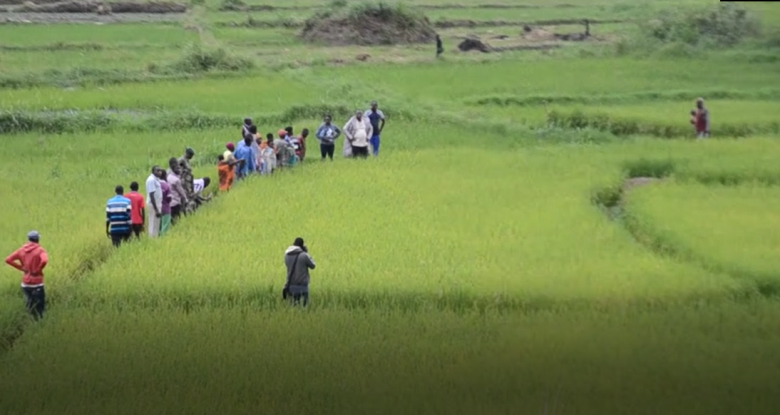Nyamigisa locals raise a red flag over wetland destruction
Nyamigisa wetland located between Mandwiga and Nyamigisa measures approximately 100 acres.

By George Busiinge
Locals in Nyamigisa in Butoole parish, Kyangwali Sub County in Kikuube district have raised a red flag over the continued destruction of wetlands in the area.
They say the only wetland which is a crucial source of water in the area is vanishing as several people have invaded and occupied it for rice growing.
Nyamigisa wetland located between Mandwiga and Nyamigisa measures approximately 100 acres and according to locals in the area, one of the high-ranked retired Uganda Peoples Defence Force officers secured its ownership and started renting it to people who are growing rice and tomatoes at three hundred thousand shillings per acre every season.
Bosco Kato and other locals are concerned that the continued destruction is going to worsen the water situation hence the need to protect it.
Kato explains that people who are growing rice and tomatoes are using herbicides sprays which are putting their lives at risk.
Robert Balimunsi, one of the area leaders say that he is concerned about the education of the children who spends all the time chasing birds from rice.
The locals reported the matter to the Kikuube resident district commissioner Amlan Tumusiime who assessed the situation and issued a one-week ultimatum for the people who are growing rice and tomatoes in the wetland to vacate peacefully.
Amlan says that it is very unfortunate Ugandans have remained adamant and continue to destroy wetlands.
Sam Tumukunde, one of the people destroying the wetland has told our reporter that they are doing this to earn a living because they are poor and have nowhere else.
According to the environment officer Kikuube district, there are only three bigger gazetted wetlands in the district that include Wambabya, Nguse and Kafu.
The rest are small tributaries which people are taking advantage of to destroy something that requires concerted efforts to preserve the water sources from further destruction.







